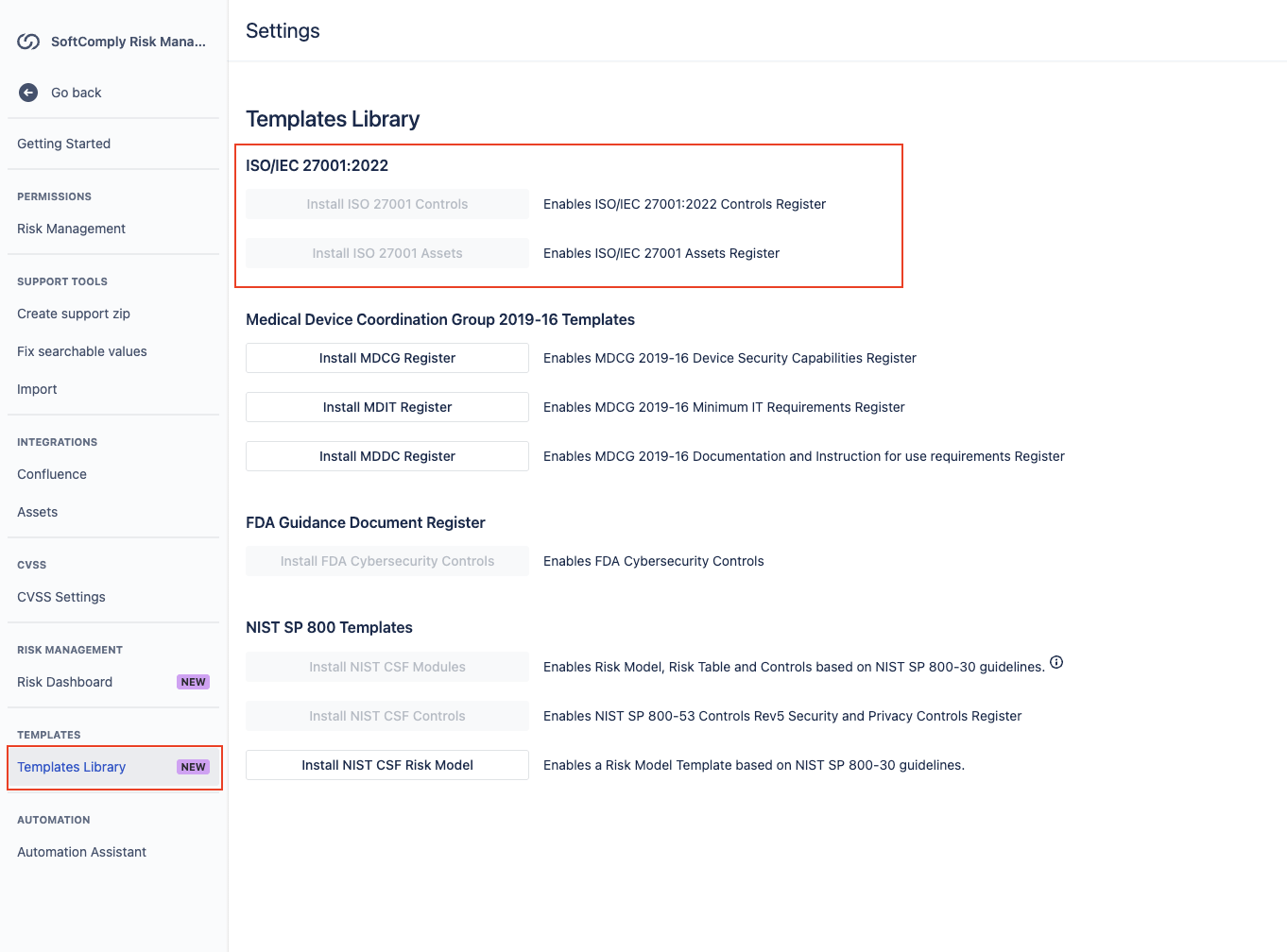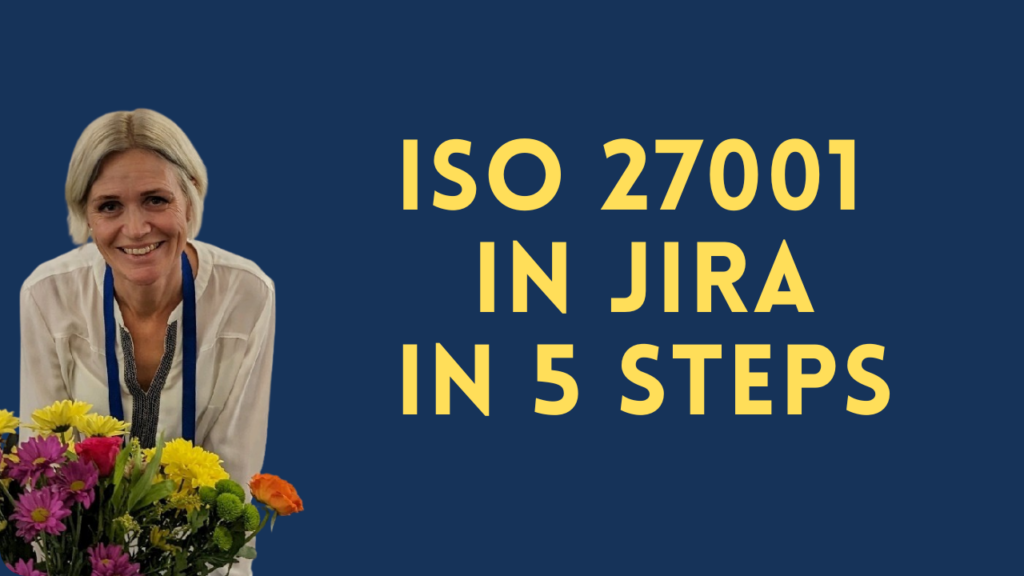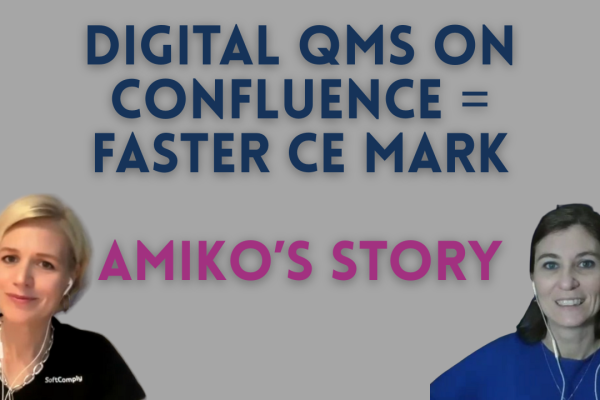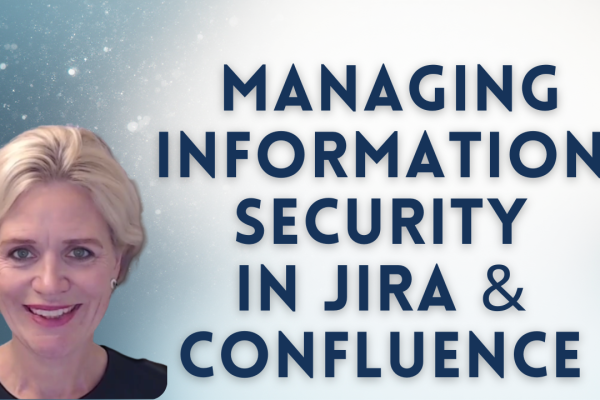Information security isn’t optional anymore. Whether you’re handling customer data at a startup or managing intellectual property at a global enterprise, a single security incident can cost you financially, damage your reputation and destroy customer trust.
That’s where ISO 27001 comes in. It’s the world’s leading standard for information security management systems (ISMS) and it has become a business requirement in industries like MedTech, pharma, finance and SaaS.
But here’s what most companies get wrong: they think ISO 27001 is about writing long policies for auditors. Those policies won’t protect you. What you actually need is a live, asset-based risk register that your team uses daily.
Watch the full tutorial above to see exactly how to implement these steps in Jira.
Why Your Current Information Security Risk Management Approach Isn’t Working
Most organizations bury their asset-based risk registers in documents nobody can find or scatter them across multiple Excel spreadsheets. Your information security management system should live where your team works every day.
The good news? ISO 27001 implementation follows a structured PDCA (plan-do-check-act) cycle that’s scalable for any organization size. A 10-person company can implement it just as effectively as a 20,000-person enterprise.
Let’s look into the 5 steps to set up your ISO 27001 compliant ISMS in Jira with the help of SoftComply Risk Manager Plus app.
Step 1: Set Up Your Risk Model and Define your Risk Acceptability Criteria
Before you start identifying assets or assessing associated risks, you need to define what “acceptable risk” means for your organization.
SoftComply Risk Manager Plus comes with a library of templates for information and cybersecurity risk management, including ones specifically designed for ISO 27001 compliance. The Risk Model template for ISO 27001 provides a classical 5×5 risk matrix (a heatmap) with two assessment iterations:
- Inherent risk: The risk level before any controls are applied,
- Current risk: The risk level after mitigation controls are implemented.
You can customize the risk characteristics (consequences and likelihood) and define your risk levels based on your organization’s risk appetite.

This creates a consistent framework for scoring risks across your entire organization, so you can actually compare them when making decisions.
In the templates library, you can also enable the ISO 27001 controls and assets libraries. These are built-in libraries of the 93 controls as provided by the 27001 standard and examples of assets.

Once you enable these, you can add the assets directly into your asset-based risk register and assign risks and controls to them.
Step 2: Build Your Asset-Based Risk Register
Asset identification is the foundation of ISO 27001. You need to catalog all your information assets including data, hardware, software, people, and processes.
In your asset-based risk register in Jira, each row represents an information security asset. For each asset, you should then:
- Link specific risks to that asset,
- Assess inherent consequence and likelihood,
- Let the app automatically calculate the resulting risk class (high, medium, low),
- Apply the appropriate controls from the built-in controls library (ISO 27001’s 93 standard controls),
- Document exactly how these controls work in mitigation notes,
- Perform residual risk assessment after controls are implemented.
The risk progress column gives you a quick visual of which risks have been successfully mitigated and which still need attention.
Step 3: Track your Compliance with the ISO 27001 Checklist
Compliance isn’t just about risk management. You need to track your progress against all ISO 27001 requirements systematically.
The built-in checklist in the SoftComply Risk Manager Plus app includes:
- All ISO 27001 requirements with detailed explanations,
- Functionality to add links to relevant Confluence pages, Jira tasks and risk register entries,
- Progress tracking for internal audits and certification preparation.
This makes external audits much smoother because you can demonstrate exactly how you’re meeting each requirement.
Step 4: Monitor Coverage with the Traceability Matrix
Asset-based risk management requires clear visibility into the relationships between your assets, risks and controls.
The traceability matrix in the Risk Dashboard of the Risk Manager Plus app shows you:
- Which assets are linked to risks and which risks are linked to controls,
- What percentage of assets have been analyzed for risks,
- What percentage of risks have been controlled,
- Coverage gaps that need attention.
For example, if 66% of your risks are covered while 33% aren’t linked to assets (like illustrated in the example below), you know exactly where to focus your efforts.
Step 5: Generate Reports and Monitor Progress
Your risk dashboard provides real-time visibility into your security posture.
Risk dashboard provides you access to:
- Review your risk heatmaps (inherent vs. current risks),
- Track your Statement of Applicability (SoA),
- Monitor coverage and progress against ISO 27001 requirements.
The dashboard gives both management and auditors a clear, real-time picture of your information security risks and compliance status.
When you’re ready for certification, you can generate the Statement of Applicability (SOA) directly from the app. This required document shows auditors which controls you’ve implemented and why.
Why Manage ISO 27001 in Jira?
Traditional risk management tools force you to context-switch constantly. When you manage your ISMS in Jira, your security program becomes part of your daily workflow instead of a separate compliance exercise.
The risk assessment process becomes collaborative and transparent. Team members get automatic notifications when risks need attention. Auditors can see real-time compliance status instead of static documents.
Plus, you’re already paying for Jira. Why add another tool when you can manage everything in one place?
Getting Started with Your ISO 27001 Journey
Information security risk management doesn’t have to be overwhelming. Start with your risk model, build your asset register systematically, and track your progress against the standard’s requirements.
The key is moving away from scattered spreadsheets and static documents toward a live system that your team actually uses. When your ISMS lives where your team works, compliance becomes part of your culture rather than a burden.
Ready to build your ISO 27001-compliant risk management system? Check out SoftComply products for risk management to see how you can implement your ISMS in your Jira environment.
Remember: ISO 27001 certification isn’t just about avoiding problems. It’s about building trust with customers, partners, and regulators who increasingly expect proof that you handle information securely. In many industries, it’s becoming a prerequisite for doing business.









